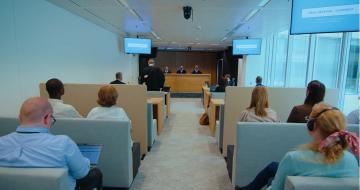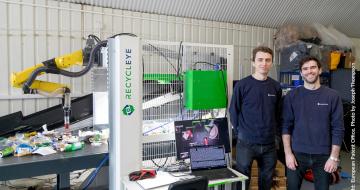In principle, every conceivable sign can constitute a trademark. There are a number of legal conditions for trademark protection which means that not all signs will actually be accepted. The two main pitfalls are the requirement of distinctiveness (the sign must be able to distinguish the goods or services of a company from those of another company) and the requirement that the sign be capable of being depicted in the register.
Signs consisting of words, numbers, letters, logos and motifs - which constitute the vast majority of the trademarks applied for - can easily be depicted in the register. The shapes of products and packaging and colours or combinations of colours may also be depicted in the register, but their distinctiveness is more difficult to prove.
For less traditional types of signs such as sounds, holograms, moving images, multimedia images, or other types of signs, the requirement for depiction in the register is less obvious, but not impossible via new technologies. For example, audio or video files could be uploaded. However, even if these signs give rise to certain associations of ideas, they can less easily convey to the consumer a perception of the origin of the products and services for which they are used and could, therefore, lack distinctiveness. Nonetheless, there are examples of these signs registered as valid trademarks in the Benelux or the European Union. Attempts to register odour and taste trademarks have so far been unsuccessful in the absence of sufficient depiction in the register.
The examples mentioned above primarily concern individual trademarks. These are trademarks that are used by one company to distinguish its own products or services from the products or services of another company. In addition to the individual trademark, which is the classic example, there are also collective and certification trademarks. In the latter cases, the same trademark may be used by different companies (e. g. the "Woolmark" logo). For more details, see the collective trademark and the certification trademark.
Word trademarks
For example: Coca-Cola, Philips, Chiquita, etc.

Figurative trademarks
For example the Apple logo.

Colour trademarks
By colour trademark, we do not mean a word or image of a certain colour, but a colour itself or a combination of colours that is registered as a trademark for a specific category of goods or services. As a result, consumers perceive that products or services, such as gasoline or telecommunications services, sold or provided under this colour, come exclusively from a particular company. The registered trademark then looks like an orange square, for example.
However, this image of the colour is insufficient to meet the requirement of depiction in the register. The applicant must also add a textual description of the colour and a reference to an internationally recognised colour code (e.g. RAL or PTS colour code).
Shape trademarks
For example, the shape of a bottle, a device, a chocolate bar, or a package.
Keep in mind that certain shapes are excluded from trademark protection! That is the case for
- shapes that are determined by the nature of the product (e.g. the normal shape of a knitting needle);
- shapes necessary to obtain a technical result (e.g. the shape of a screwdriver to obtain better technical results) and
- shapes that grant a substantial value to the product (e.g. the shape of an artistically looking crystal vase). No one can monopolise these shapes.
It should be noted that these excluded shapes are sometimes protectable by other intellectual property rights such as patents, designs and copyright. These other rights are limited in time, while the trademark is renewable indefinitely.
Sound trademarks
As regards the representation of a sound trademark in the register, it is possible to file an electronic audio file (e.g. an .mpg file). Generally, this will be the best option. A melody can also be described by a musical stave. For a different sound, such as the sound of an animal, a simple description or textual imitation is insufficient. A complete sonogram with volume, time and frequency modulations may nevertheless be sufficient.
One example of a sound trademark is one held by the Metro-Goldwyn-Mayer film studios, which obtained a trademark registration for the famous roaring lion (registration number 005170113).
Odour trademarks, taste trademarks and tactile or texture trademarks
For these types of trademarks, a depiction or representation in the register will potentially present a problem.


